Guppies are some of the most popular fish in the world thanks to their charm and appearance. Most hobbyists are familiar with pet guppies, but feeder guppies are less frequently discussed. Raised in large numbers to be fed to other larger aquarium fish, feeder guppies are typically smaller and less colorful than their pet store counterparts.
This guide will cover everything you need to know about keeping and caring for feeder guppies, including their diet, habitat, and breeding requirements. Whether you are considering using feeder guppies, or are simply curious about this type of fish, you’ll find all the information you need right here. Read on for everything you need to know!
What Are Feeder Guppies?
Feeder guppies are a type of fish that is commonly used as food for other animals in the aquarium. As the name suggests, they are typically fed to other fish, but can also be consumed by reptiles, amphibians, and invertebrates.
Theoretically speaking, any guppy can be bred for food. However, feeder guppies are generally less resilient and aesthetically appealing compared to their pet store counterparts. Unfortunately, this is a reflection of the fact that they are bred for their utility as food. They are often less healthy than ornamentals, as they are not given the same level of care.
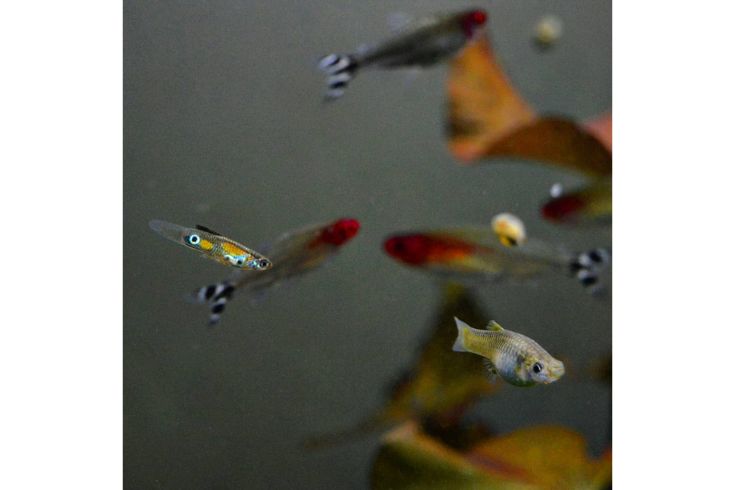
Ethical Concerns
The utilitarian nature of feeder guppies raises ethical concerns for some aquarists. Some people believe it is cruel to breed fish solely to feed them to other animals. This is especially the case when other alternatives exist.
On the other hand, many aquarists believe feeder guppies serve a valuable purpose. They provide an inexpensive and convenient food source for animals that would otherwise be difficult to feed. Fishkeepers that use feeder fish argue that this merely replicates the natural order of things. In the wild, fish are regularly eaten by other animals.
Whether or not to use feeder guppies is a personal decision every aquarist must make. There is no right or wrong answer, and each person will have ethical considerations to consider. This article will focus on providing information about feeder guppies so that everyone can make an informed decision.
Feeder Guppy Care Guide
Having briefly touched on the ethical considerations of using feeder guppies, we will now move on to provide care information for those who have decided to use them. As with any animal, it is important to ensure that they are kept in a healthy environment. This benefits not only the fish but also the animals that will be eating them.
Tank Requirements
People rarely consider the tank requirements of feeder guppies as they are not kept for display purposes. However, it is important to remember that they are living creatures that deserve to be treated humanely. The smallest tank that should be used for feeder guppies is 10 gallons (37.9 L). This is sufficient for 10-15 feeder guppies, depending on their size.
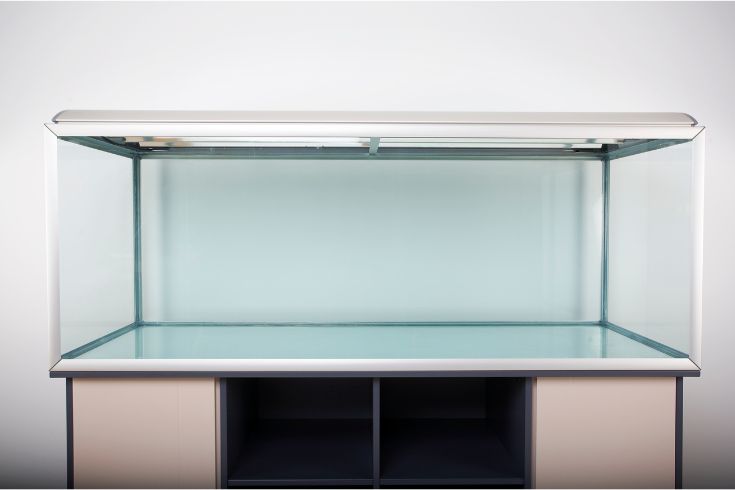
In terms of tank decor, there is no need to go overboard. A simple setup with some live plants and a few hiding places will suffice. Many people assume that feeder guppies do not require hiding places. However, this is not the case. All fish need to feel safe and comfortable in their surroundings, even if they’re destined for someone’s dinner plate.
Another thing you should do is separate guppy fry from adult fish. Yes – you need to do this even when you’re only raising them for food. Guppy fry are very small and vulnerable, and will be eaten by their larger tankmates if given the chance. You don’t want them to be eaten before you even have a chance to feed them to someone else!
Water Requirements
The water parameters for feeder guppies are the same as those of ornamental guppies. They prefer a temperature between 72-82 degrees Fahrenheit, a pH of 7.0-8.5, and a hardness of 5-20 dGH. Water quality is vital to the health of all fish, so be sure to test the water regularly and take steps to keep it clean.
Overall ammonia and nitrate levels in the water should be as close to 0 ppm as possible. It is important to note that feeder guppies are less tolerant of poor water quality than most other guppies. These fish are not bred for longevity, so they may not have the disease resistance and overall hardiness of their ornamental cousins. So, be sure to keep water parameters constant!
Habitat Maintenance
The key to keeping feeder guppies healthy is to maintain a clean and well-oxygenated habitat. This means performing regular water changes and ensuring plenty of aeration in the tank. As we mentioned before, feeder guppies are less tolerant of poor water quality than other guppy varieties. So, it is especially important to keep their habitat clean.
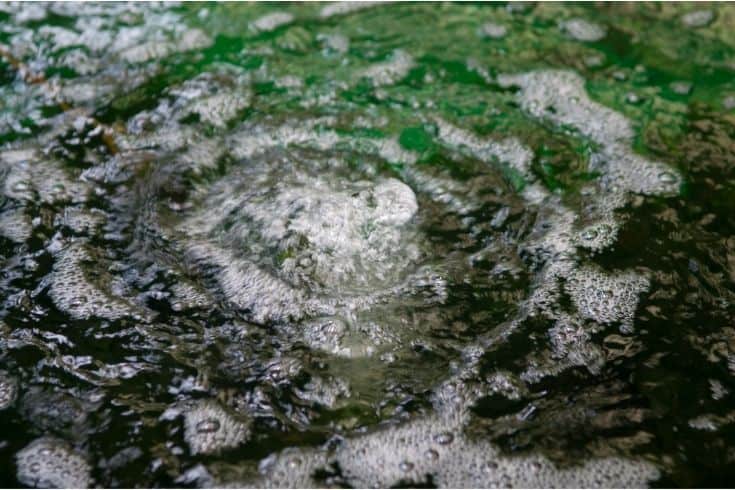
A good rule of thumb is to do a 50% water change every week. This will help keep ammonia and nitrate levels low and replenish trace elements essential to aquarium fish’s health. Be sure to vacuum the gravel and clean the filter media while you’re at it. By removing any accumulated waste, you’ll help keep the water quality high and reduce the risk of disease.
As for aeration, it is important to ensure that there is enough dissolved oxygen in the water. Guppies are surface-dwelling fish, so they require plenty of oxygenated water at the top of the tank. An air stone or bubbler can help to achieve this. Just be sure that the bubbles are not too big, too much turbulence can stress out fish.
Filtration Requirements
We’ve touched on the importance of maintaining a healthy habitat for your feeder guppies. But what about filtration? Do these fish need a filter at all? If they do, what type of filter is best?
The answer to the first question is yes, all fish need a filter. This is especially true of guppies, regardless of whether they’re intended as pets or food. A filter will help to keep the water clean and free of harmful toxins. It will also help to maintain a healthy oxygen level in the water.
As for the type of filter, there are many options to choose from. Hang-on-back (HOB) filters and canister filters are both good choices for feeder guppy tanks. Just be sure to get an appropriately sized filter for your tank. A too-powerful filter can create too much water movement, which can stress your fish.
Heating Requirements
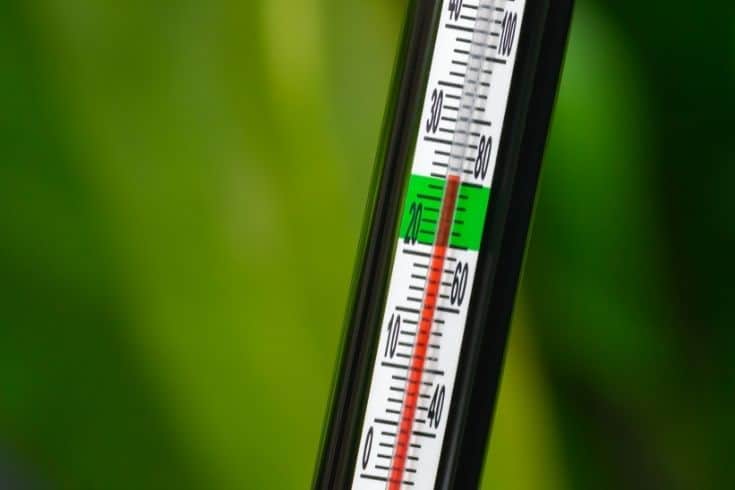
Last but not least, let’s talk about heating. As we mentioned before, guppies come from tropical climates and prefer water that is between 72-82 degrees Fahrenheit. Most homes are kept at a comfortable temperature for humans, which is usually around 70 degrees. In these cases, you will likely need to supplement the tank with a heater.
There are many different types of aquarium heaters to choose from. We recommend choosing an adjustable heater to dial in the perfect temperature for your fish. Be sure to use a thermometer to check the water temperature regularly, especially when you first set up the heater. This will ensure that the heater is working correctly and that your fish are comfortable.
Another advantage of using a tank heater is its ability to stabilize water temperatures. This is important because sudden temperature changes can cause stress and illness in fish. A heater will help to maintain a consistent water temperature, even if the room temperature fluctuates. Given the unpredictability of weather, this is an important feature for all fish tanks.
What Do Feeder Guppies Eat?
Phew! That was a lot of information. But we’re not done yet! The next thing to consider is what to feed your feeder guppies. After all, they need to eat just like any other fish. The good news is, these are omnivorous fish that will accept a wide variety of food. Let’s look at everything your feeder guppies can and should eat.
Commercial Feeder Guppy Food
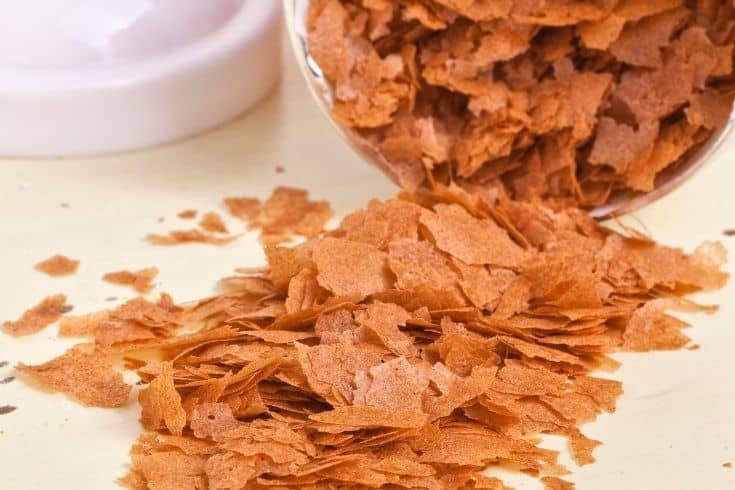
One of the easiest ways to ensure that your feeder guppies get everything they need is to feed them a quality commercial diet. There are many different types of fish food on the market, so be sure to choose one specifically designed for guppies. These foods usually contain all the nutrients and vitamins that guppies need to stay healthy.
Generally speaking, you’ll want to look for a flake food that contains a mix of protein and plant-based ingredients. This will help to ensure that your fish get the nutrients they need from both animal and plant sources. Omnivores need a balanced diet to stay healthy!
Live Foods
In addition to commercial diets, guppies will also accept live foods. This includes things like brine shrimp, daphnia, and bloodworms. Live foods are an excellent protein source and can help keep your fish healthy and active. They are also a lot of fun to watch your fish hunt and eat!
If you decide to feed your guppies live foods, do so sparingly. Live foods should only make up a small portion of their diet. This is because they are very high in fat and can cause obesity if fed too often. And pragmatically speaking, live foods can be expensive, not to mention a hassle to keep around. So, while they can be a nice treat for your fish, don’t make them the mainstay of their diet.
Plant Matter
You didn’t think we were going to forget about plants, did you? All omnivores require both protein and plants in their diets. When it comes to guppies, most of the plants they eat will come from algae. These fish are notorious algae-eaters and will help to keep your tank clean.
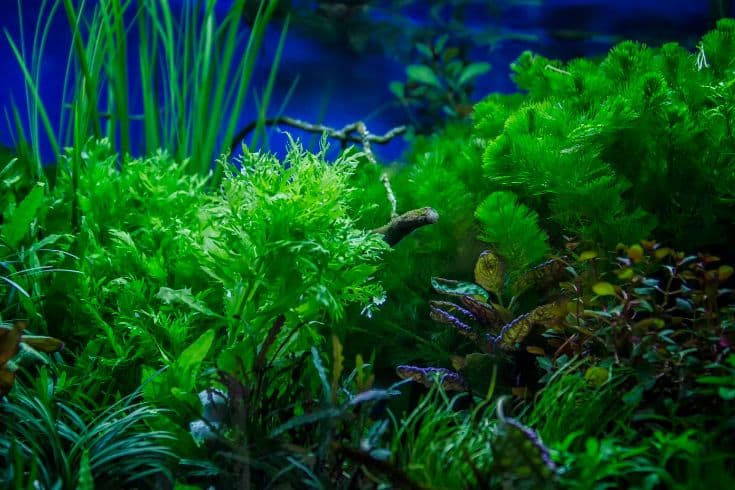
Algae are an important part of a guppy’s diet because they provide essential nutrients that these fish need to stay healthy. In addition, eating algae helps to keep a guppy’s digestive system clean and functioning properly. Think about it – algae is a lovely source of fiber for fish!
If you don’t have enough algae in your tank, you can supplement their diet with blanched vegetables like zucchini, lettuce, and cabbage. These vegetables should be offered a few times weekly and make up no more than 20% of their diet. Algae wafers are another option. These are widely available, and super easy to store.
Breeding Feeder Guppies
Now that we’ve covered everything there is to know about keeping and feeding feeder guppies, it’s time to talk about breeding them. After all, these fish are bred specifically for feeding purposes. So, if you’re interested in breeding your own feeder guppies, here’s what you need to know.
Breeding feeder guppies is actually relatively easy. These fish are very prolific breeders and will often mate without any intervention. However, you can do a few things to encourage breeding and ensure that your fish produce healthy offspring.
- First, it’s important to have a good ratio of males to females. You should aim for two or three males for every female. This alleviates some of the stress the females experience and makes it more likely that they will mate. You wouldn’t know it by looking at them, but male guppies can be very persistent!
- Next, you need to make sure that your fish have plenty of hiding places in their tank. This is especially important for the females, who need somewhere to go to escape the attention of the males. Hiding places can be as simple as some rocks or plants.
- Finally, you need to make sure that your fish are well-fed. A healthy diet will ensure that your fish are in good condition and that they produce healthy offspring.
If you follow these simple tips, you should have no trouble breeding your feeder guppies. A female guppy can give birth multiple times after a single encounter with a male fish, so you’ll find yourself with more guppies than you know what to do with in no time!
Raising Feeder Guppy Fry
Once your fish have mated, livebearing female guppies will give birth to anywhere from 20 to 100 fry (baby fish). These fry are extremely small and vulnerable, so it’s important that you remove the fry from the breeding tank and put them into their own separate tank. This is because the other fish in the tank will see the fry as food and will eat them if given the opportunity.
In addition, you’ll also need to provide your feeder guppy fry with life-stage-appropriate food. Usually, food sources rich in protein and fat are best for fry. This includes live foods like brine shrimp and daphnia. You can also offer them commercial fry food designed to meet their specific nutritional needs.
Once they reach a certain size, you can start slowly introducing them back into the main tank with the other fish. However, it’s important to approach this carefully so as to keep your fish safe. Feeder guppy fry grow quickly and will reach maturity within a few months. At this point, you can either breed them or start offering them up as food for your other fish.
The Takeaway
Feeder guppies are a useful food source for other fish and can be easily bred in captivity. However, they deserve as much care and attention as any other fish in your aquarium. By applying the tips in this article, you can ensure that your feeder guppies are healthy and happy. We promise it is worth the effort!
Did you enjoy this article? Do you know someone who might find it helpful? We would love to hear your feedback and thoughts in the comments section below. And don’t forget to share this article with your friends and family! Thanks for reading, and happy fishkeeping!
